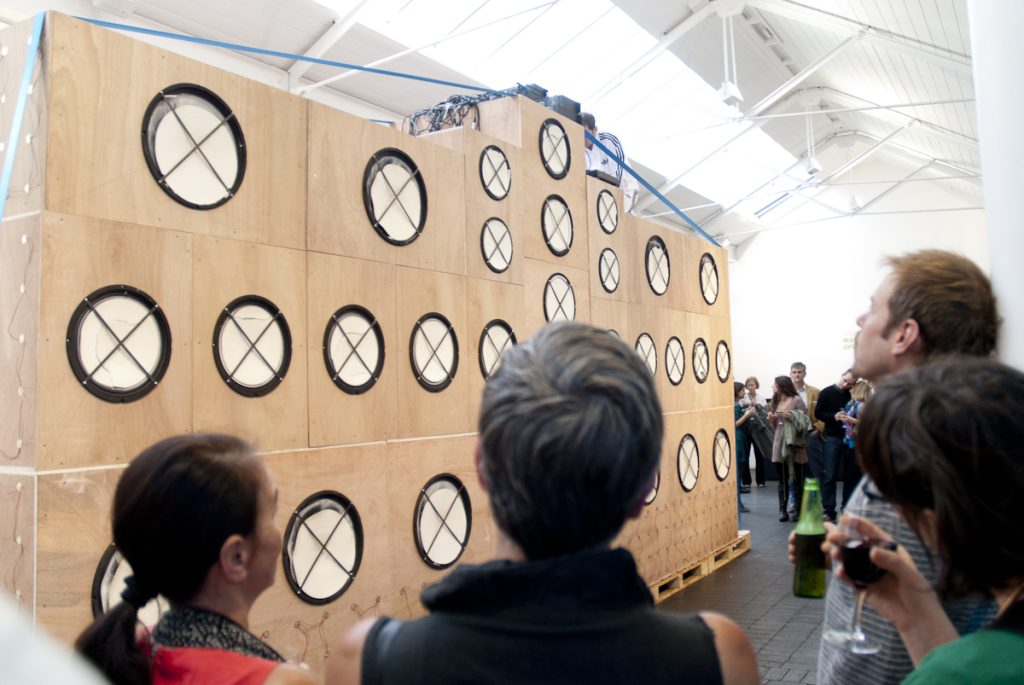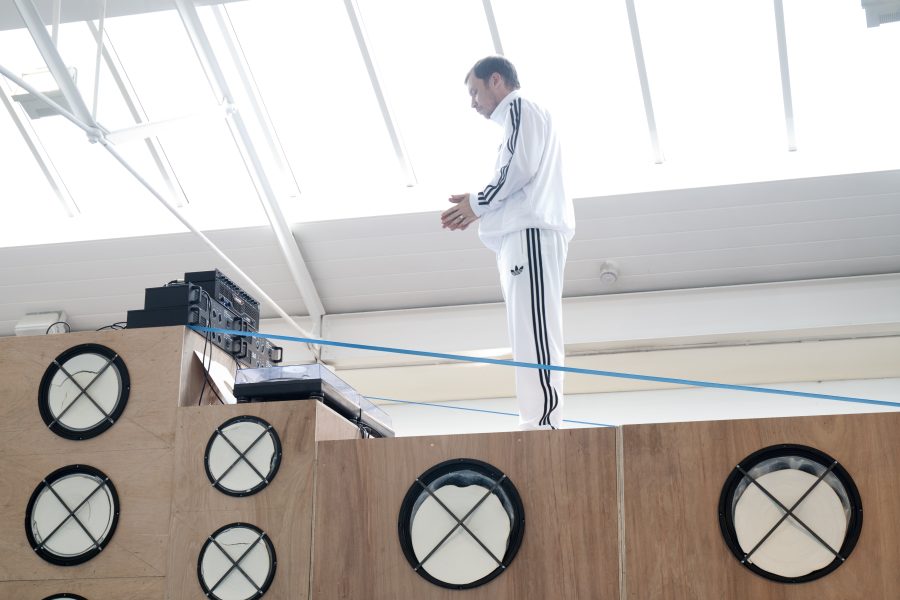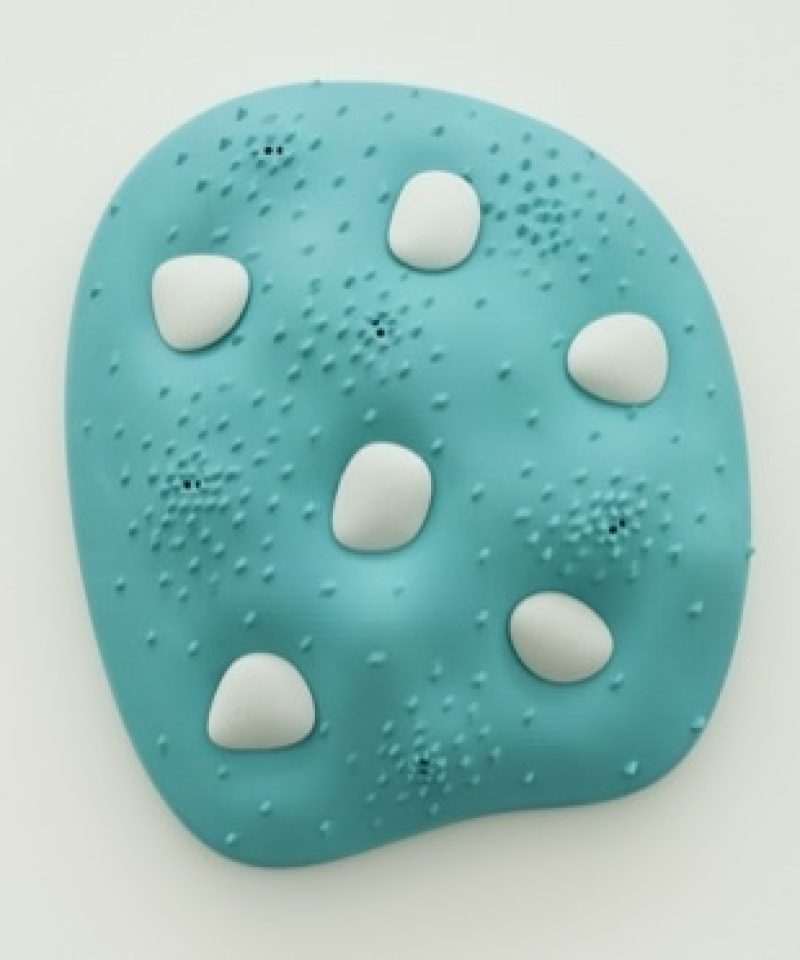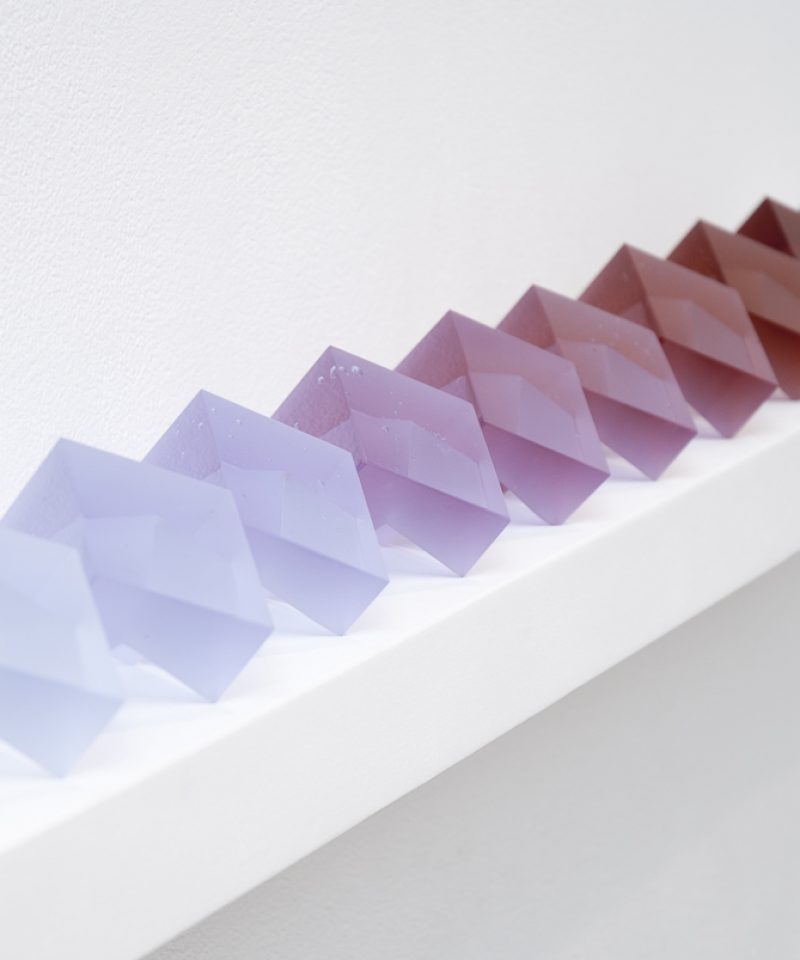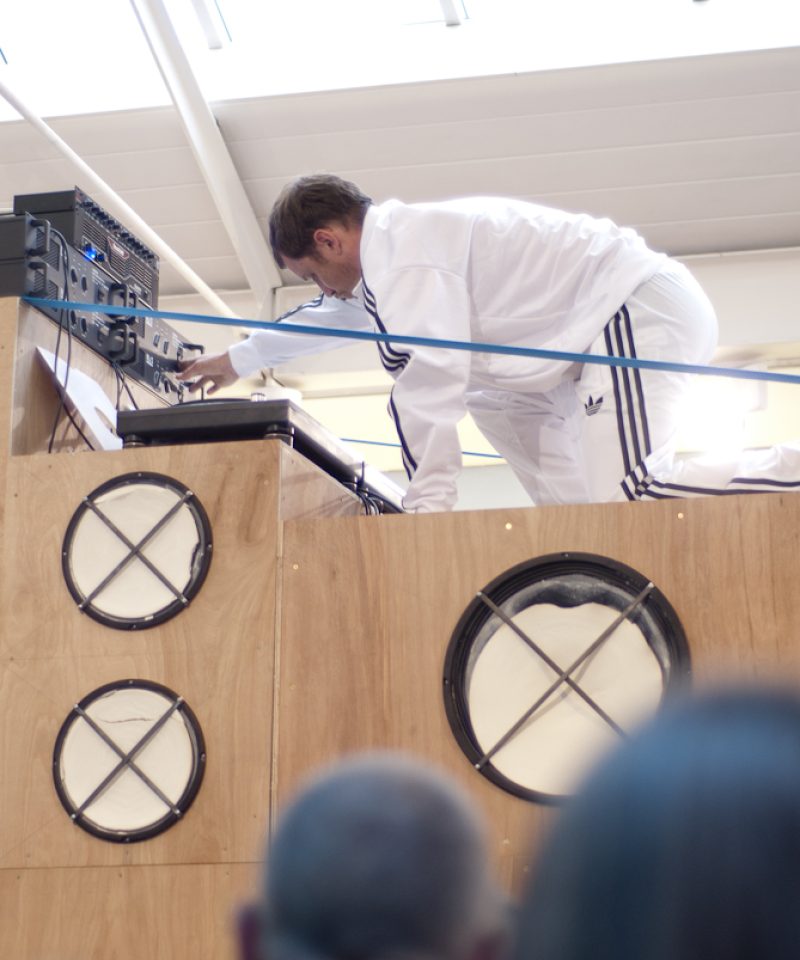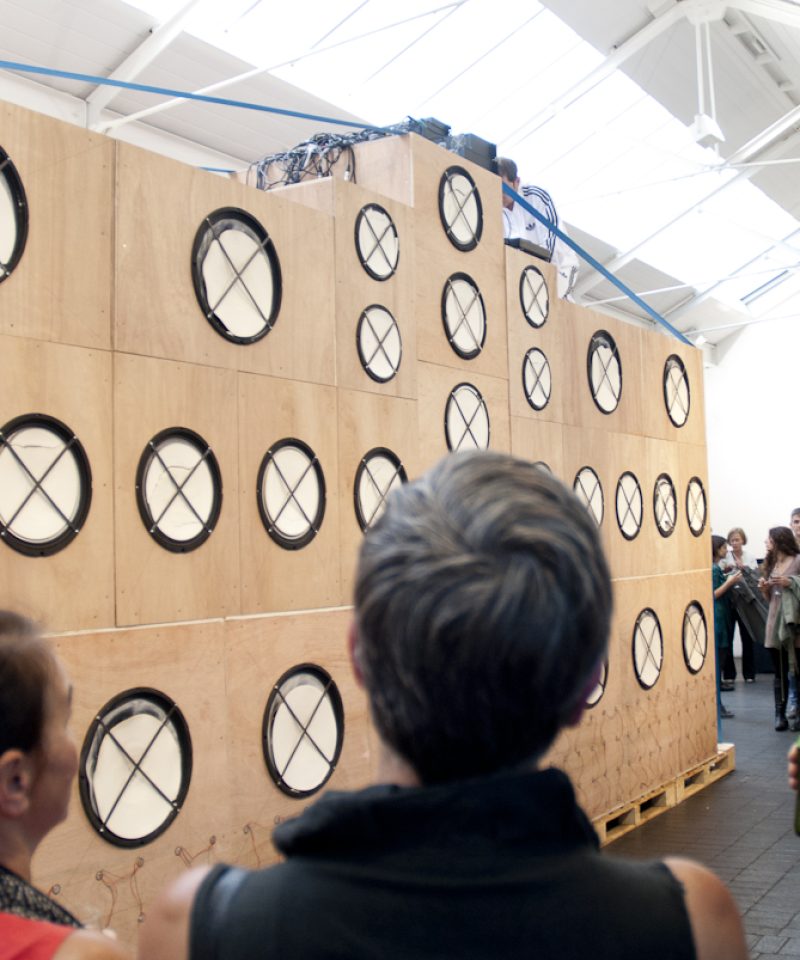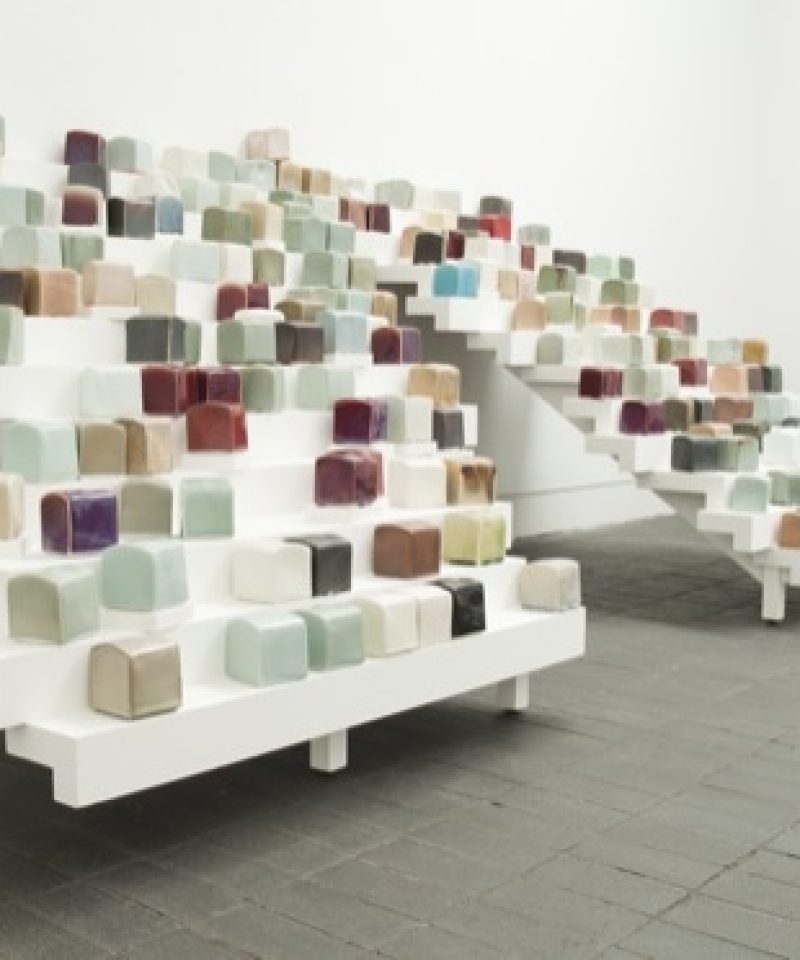Towering above visitors at the Jerwood Arts is a gargantuan wooden structure comprising twenty-six hand made speakers. Perched atop these, only just visible, is a stack of audio equipment, waiting for a ‘selector’ to come and activate this vast sound system. This is the opening night of the Jerwood Makers Open and the ‘selector’ is artist Keith Harrison who, kitted out in a white Adidas tracksuit, calmly walks across the gallery and clambers up on the top of the speakers. But instead of blasting visitors with the heavy bass-driven sounds of dub reggae, he begins to play an Enrico Caruso recording.
Inspired by Werner Herzog’s 1982 film Fitzcarraldo, Harrison’s Float makes reference to a scene where the protagonist (played by Klaus Kinski) voyages up the Pachitea River on a steamship, playing Caruso records on a gramophone in an attempt to communicate with the indigenous tribes of the Peruvian jungle. Another key referent here is the artist’s experience of the legendary Jah Shaka sound system at Exeter’s St George’s Hall in 1994. As Harrison recalls, the sound system was ‘so loud and solid that the crowd seemed physically aligned around the speakers, banked either side of the room, like iron filings between magnets’. But the potential power of Harrison’s sound system is muted, for each speaker cone has been filled with raw clay. Bass tones are deadened, and the gallery is filled with tinny high frequencies, emanating from the hundreds of ceramic transducers covering the work.
For Harrison, this ambitious work is an investigation into the potential for sound to transform matter and is the culmination of several smaller scale works and live experiments in which sound, clay and electricity have played a central role. While previously domestic and industrial electric heating systems have been employed to physically alter clay in front of live audiences, here it is the power of sound waves that causes the clay to fissure and crack, physically destroying the work in an act of auto-destruction. Indeed, Harrison cites as influences artists such as Gustav Metzger, whose auto-destructive artworks ‘re-enact the obsession with destruction, the pummeling to which individuals and masses are subjected’. Other artists to have inspired Harrison include radical ceramicist Gillian Lowndes, and the Argentinean conceptual artist Victor Grippo, whose most well known work harnessed the electrical potential of potatoes.
As we watch Harrison’s performance, ceramic dust is shaken to the floor and several of the clay mutes begin to crack. It’s an exciting, unpredictable piece that confounds our preconceptions about what ceramics should and can be. With his various projects and performances Harrison not only breaks all the rules but has thrown away the rule book all together, creating astonishing experimental pieces that sit a million miles away from the image of the proverbial potter at his wheel.
